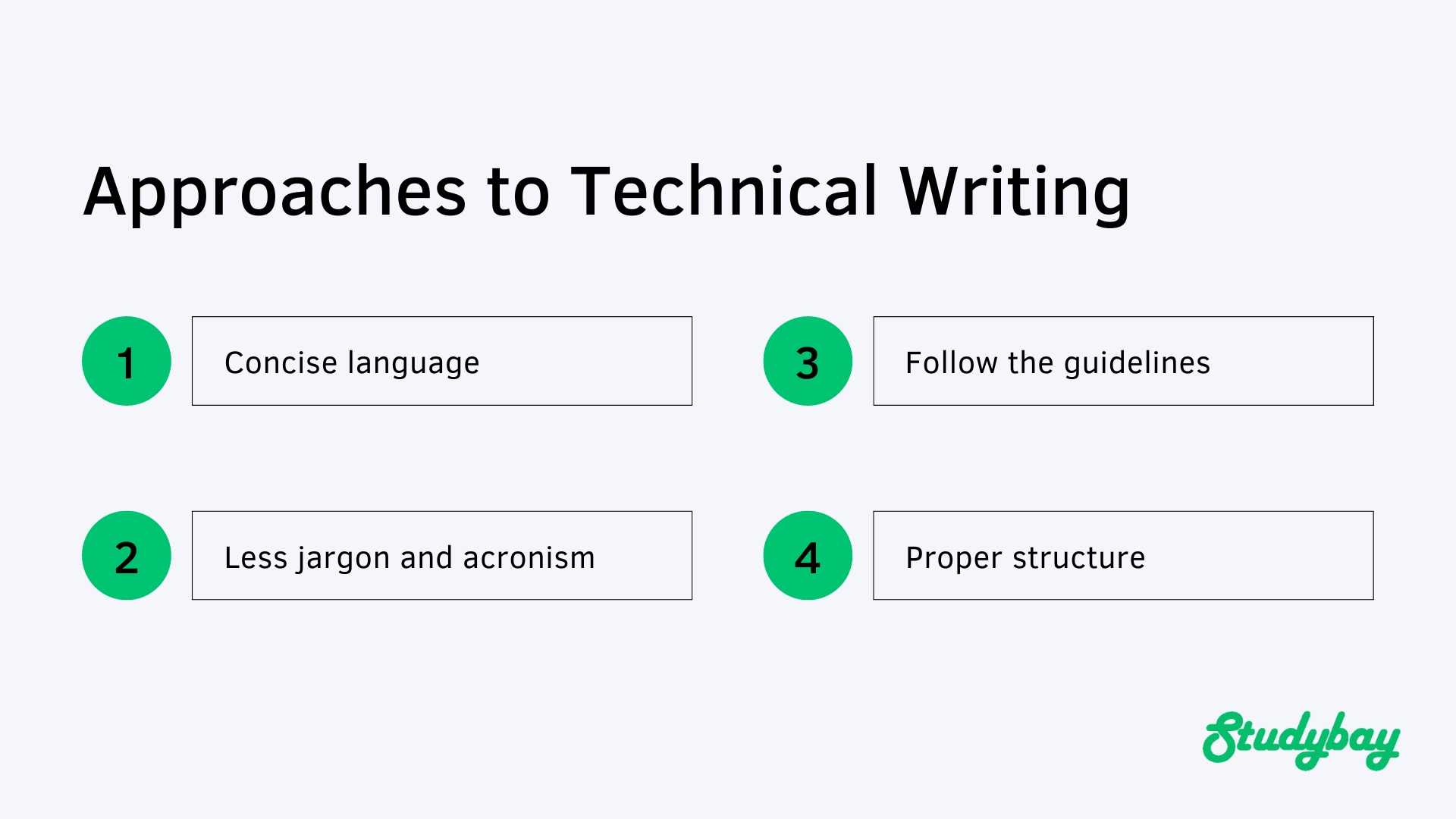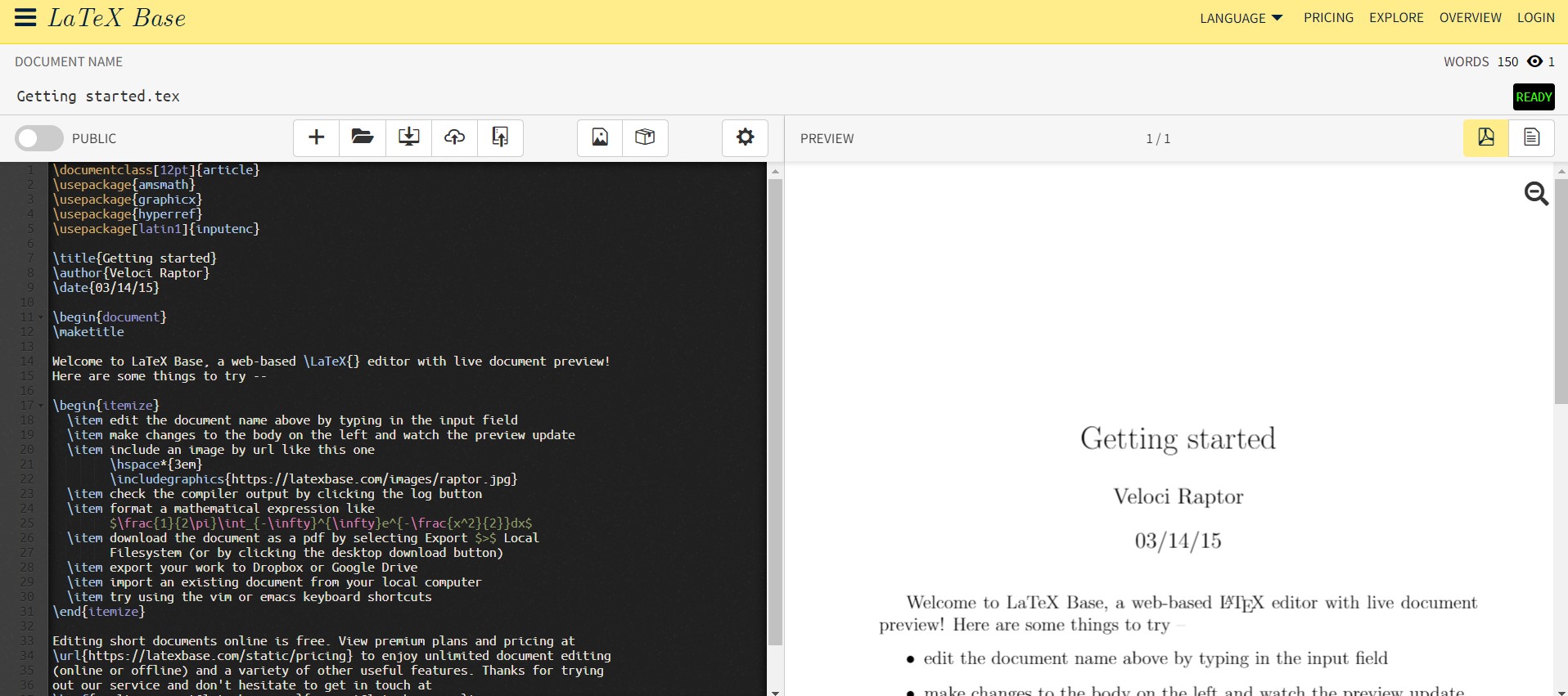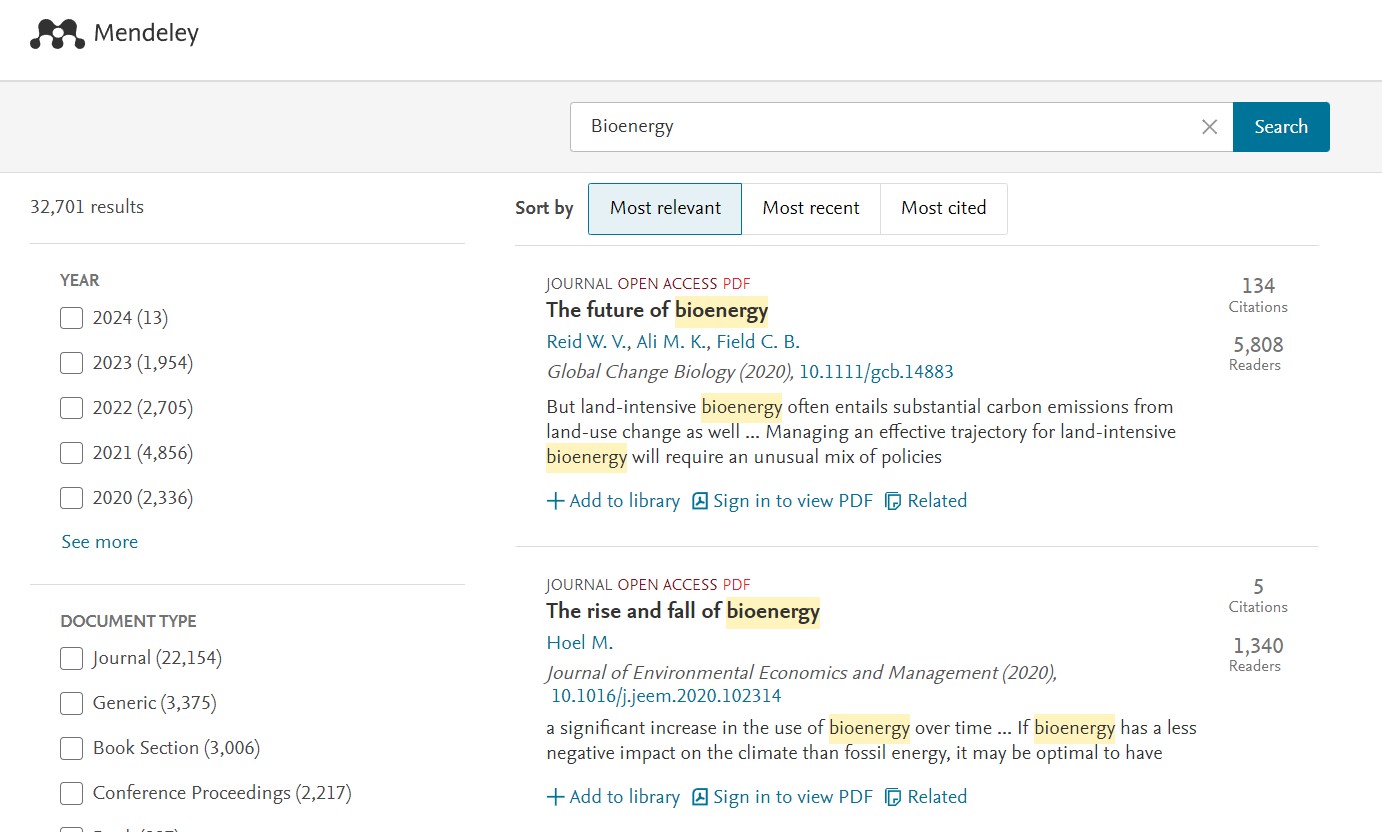
18 min
0
04.04.2024

In the fields of science, technology, engineering and mathematics (STEM) good communication is vital. Clear technical documents play a role in sharing research results, explaining ideas and promoting collaboration among scientists. Enhancing your writing abilities is essential for achieving success in any STEM related field, whether you're a student, researcher or employed professional.
- Understanding Technical Writing
- Components of Technical Documentation
- Principles of Clarity and Precision
- Formatting and Presentation
- Revision and Editing Techniques
- Tools and Software for Technical Writing
- Ethical Considerations
- Developing a Personalized Writing Process
- Overcoming Common Challenges
- Case Studies and Examples
- Conclusion
- Resources
- FAQ
- What is technical writing?
- What are some common types of technical documents?
- What are the key principles of effective technical writing?
- Why is proper formatting and visual presentation important?
- How can I improve my technical writing skills?
- What are some common challenges in technical writing?
- What tools are available for technical writers?
Understanding Technical Writing
Technical writing
Technical writing is a specialized type of communication that seeks to convey complex information, data, and processes in a clear, concise, and unambiguous manner.
At its core, technical writing translates intricate concepts into accessible language tailored for specific audiences. Whether crafting research reports, laboratory manuscripts, user manuals, or proposals, audience analysis forms the bedrock. Understanding your readers' backgrounds, motivations, and depth of subject familiarity allows you to modulate content complexity, terminology, and stylistic nuances accordingly.
Components of Technical Documentation
Technical documentation includes many different types of written materials, each with its own specific use in STEM fields. Some of the most common types of documentation include:
Research reports and papers
These papers detail the results and interpretations of research projects. A typical outline includes an abstract, an introduction, a method section, findings, a discussion part, and references.
Lab reports
A lab report is a written record of an experiment's methods, findings, and observations made in a controlled laboratory environment. Goals, procedures, data, observations, analysis, and conclusions are the usual components of such a document.
Manuals and guides
Equipment, software, or system operation can be better understood with the help of these detailed how-to manuals. Typical aids to understanding include pictures, diagrams, and troubleshooting guides..
Proposals and grant applications
Writing compelling proposals or grant applications to seek financing for research projects or initiatives is a common chore for technical writers in STEM professions. In these papers, you should lay out the project's objectives, approach, and possible results in detail.
Principles of Clarity and Precision

Clarity and precision are the cornerstones of effective technical writing. To achieve these qualities, writers should employ the following strategies:
- Use of concise language
Avoiding flowery language and repetition is essential.
- Avoidance of jargon and acronyms
Excessive use of acronyms and jargon might make it harder for people to understand, even though technical terms are often necessary. When introducing technical words, be sure to define them or explain them thoroughly.
- Proper organization and structure
The content's readability depends on its logical progression and well-organized concepts. To aid the reader in navigating the document, make use of suitable headings, subheadings, and layout.
Academic journals enforce rigorous publication guidelines synced with field formatting standards. From precise referencing styles to section structuring and data presentation norms, published articles exemplify scholarly writing conventions.
Formatting and Presentation
The visual presentation of technical documents is as important as the content itself. Consistent formatting and effective use of visuals can help readers understand and engage with the material.
- Importance of consistent formatting
Establish and follow consistent formatting guidelines for elements like headings, fonts, spacing, and page layouts. This consistency promotes a professional and polished appearance while improving readability.
- Effective use of visuals
If you need to supplement or explain complicated facts or data, use visual aids like graphs, tables, diagrams, or pictures. Make sure the images are properly labelled, captioned, and integrated into the text.
- Citation and referencing styles
APA, IEEE, or CSE are some of the most common citation and reference formats used in the STEM fields. If you want your publications to be credible and properly cited, you should study up on the relevant style guide and stick to it religiously.
Revision and Editing Techniques
Technical writing is an iterative process, requiring several rounds of review and editing. Effective review and editing strategies can help to enhance the quality and clarity of your publications.
|
Proofreading strategies |
Make spelling, grammar, punctuation, and consistency your proofreading priorities. One way to make sure your work is error-free is to read it out loud or use a text-to-speech program. |
|
Seeking feedback and peer review |
Get the opinion of people you respect, such as mentors, professionals in the field, or classmates. Their unique viewpoints may enhance your writing by pointing out weak spots, clarifying confusing passages, and highlighting opportunities for growth. |
|
Using writing resources |
Ensure correct use of technical vocabulary, formatting rules, and writing best practices by consulting style guides, dictionaries, and other writing resources. |
Tools and Software for Technical Writing
Today, there are tools and programs available to help with writing and documentation. These platforms offer templates, spellcheck and grammar check to help writers work more efficiently.
A lot of people who deal with scientific formulae and equations find LaTeX to be a helpful application. LaTeX is perfect for writing reports, technical manuals, and research papers because it lets writers make aesthetically pleasing documents. The wide capabilities and configurable templates of LaTeX are well appreciated by scholars and academics, however understanding them can be a bit of a challenge due to their complexity compared to word processors.

Technical papers may be better organized and cited with the help of reference management tools such as Mendeley and Zotero. Writers may use these programs to import references from databases, create libraries for them, and then produce citations in different formats.

Google Docs and Microsoft Teams are two examples of collaborative applications that may help research teams and authors work more efficiently. Using these platforms, a team may work on a document together, discuss it, and keep tabs on who made what changes. The most recent versions and updates are always accessible due to features like version history and document sharing.
Ethical Considerations
The sharing of accurate and trustworthy information is vital in STEM subjects, hence it is imperative that technical writers maintain the highest standards of integrity and ethical behavior.
- Proper attribution and plagiarism avoidance
Respect intellectual property rights by properly attributing ideas, data, and information to their original sources. Plagiarism, in any form, is unacceptable and can have severe consequences.
- Integrity in data presentation and analysis
When presenting and evaluating data, technical writers must adhere to the highest ethical and transparent standards. Misrepresenting or altering data may jeopardize the credibility of research and have serious consequences.
- Respect for intellectual property rights
Adhere to copyright laws and obtain necessary permissions when reproducing or adapting copyrighted materials, such as images, figures, or substantial excerpts.
Developing a Personalized Writing Process
Every writer is unique, with their own strengths, preferences, and challenges. To succeed as a technical writer, you must develop a personalized writing process that meets your specific needs and maximizes your productivity. This includes determining your ideal working conditions, establishing routines, and implementing effective time management strategies. For some, this may imply devoting regular blocks of time to writing and editing tasks during their most productive hours. Some people are more productive when they use techniques like the Pomodoro technique, which consists of brief intervals of focused work followed by shorter breaks. Whatever strategy you choose, the most important is to try different things until you find what works.
Setting realistic goals and deadlines is essential. For bigger projects, divide the work into smaller, more manageable chunks and dedicate specific time to each stage, such as research, drafting, revision, and feedback gathering. Developing a bespoke writing process that takes into account your unique working style and preferences can help you save time, work more efficiently, and produce better documents.
Overcoming Common Challenges
Even the most seasoned authors might encounter obstacles. A common problem is writer's block, when words just will not come out, and you can not move forward. If this is you, try doing some freewriting exercises, finding a new spot to write, or dividing large tasks into smaller, more manageable ones. Another option would be to switch gears and concentrate on research or editing until you are in the mood to write again.
Finding the sweet spot between being technically accurate and being easy to read is another typical challenge. Maintaining precise details is critical, but so is making otherwise complex topics accessible and engaging. To make terms easier to understand, try to provide examples, comparisons, or visual aids. Doing so will ensure that your content is accessible to readers with varying levels of expertise on the topic.
Receiving criticism and comments on your work is a necessary but terrifying aspect of being a writer. Recognize that criticism is an opportunity for improvement and approach it with a growth mindset. Experts and other professionals can provide valuable feedback that can help you improve your work, clarify any confusion, and become a better technical writer.
Ask for feedback on aspects like claims justification, writing clarity, logical flow, grammatical issues, and alignment with your target journal's style. Implement this external feedback to elevate and refine your materials.
Case Studies and Examples
It can also be helpful to look at common mistakes and pitfalls. Examining instances of jargon overuse, lack of coherence, or improper citation practices can help you develop strategies for identifying and addressing these issues in your writing. By breaking down both good and bad examples, you can improve your ability to think critically and learn more about what makes technical communication work.
Exploring success stories and lessons learned from individuals or organizations can provide both inspiration and practical wisdom. Perhaps a research team secured funding for a groundbreaking project by writing a compelling proposal, or a technology company simplified its operations by meticulously documenting user manuals. You can improve your writing by learning from others.
As it is stated by Dorma Journals Publication Center, "Scientific progress relies on continuous refinement and community-based checking mechanisms for credible knowledge advancement. While errors are unavoidable, diligent student participation maintains journals' integrity as the foundation of research design and public understanding."
Conclusion
While universal principles govern excellence, every individual's journey is unique. Develop rituals and habits conducive to your peak creativity – be it outlining drafts, freewriting ideas sessions, or adopting focused work cycles through techniques like Pomodoro. Prioritize self-care through balanced scheduling, allowing downtime for rejuvenation amid intensive writing phases. Embrace both successes and setbacks as invaluable learning experiences, propelling your growth.
With dedication, perseverance, and this holistic mastery of your skills, you will emerge as a consummate STEM communicator – illuminating a complex subject, driving innovation, and shaping humanity's intellectual frontier. Onward, scholars – let your eloquence catalyze discovery!
Resources
- Journals | DJPC. https://www.dormaj.com/journals.htm
- The role of writing in STEM – writing across engineering and science. https://publish.illinois.edu/waes/the-role-of-writing-in-stem/
- Technical Writing - Graduate Writing Center - Naval Postgraduate School. https://nps.edu/web/gwc/stem/technical-writing
- Utah State University. Technical Writing Standards | Engineering Writing Center | College of Engineering. USU. https://engineering.usu.edu/students/ewc/writing-resources/technical-writing-standards
- Wu, S., Zha, S., Estis, J. M., & Li, X. (2020). Innovative Pedagogy: Improving STEM students’ technical writing skills using Team-Based Learning (TBL). ResearchGate. https://doi.org/10.13140/RG.2.2.14970.93120
FAQ
What is technical writing?
What are some common types of technical documents?
What are the key principles of effective technical writing?
Why is proper formatting and visual presentation important?
How can I improve my technical writing skills?
What are some common challenges in technical writing?
What tools are available for technical writers?



